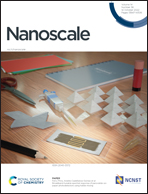Several semiconducting two-dimensional silicon nanosheets assembled from zigzag silicene nanoribbons
Abstract
Semiconducting two-dimensional intrinsic silicon nanosheets are ideal materials for many applications in modern industry, since they are the only ones that can match well with previous silicon components. However, such materials are still lacking, especially those with moderate band gaps. In this work, by using first-principles theory, a series of two-dimensional intrinsic silicon nanosheets are assembled from zigzag silicene nanoribbons with different widths. The result shows that all the nanosheets behave as semiconductors, although some of them possess small band gaps of dozens of meV. Two of them, individually assembled from the two narrowest zigzag silicene nanoribbons, possess the largest indirect band gaps of 0.20 and 0.26 eV, respectively. Under low compressive strain, these two nanosheets would turn into quasi-direct or direct band gap semiconductors, and the gaps increase up to 0.62 or 0.54 eV, respectively. Due to the electron transfer from three-fold to four-fold coordinated Si atoms, the charge carriers prefer to transport along the zigzag direction, and electrons and holes transport in the respective Si chains. Interestingly, the investigation of Poisson's ratio reveals that the assembled silicon nanosheets have a negative Poisson's ratio in certain strain ranges if the width n of zigzag silicene nanoribbons is even. This work provides a new approach to design semiconducting silicon nanosheets and benefits to the applications of two-dimensional silicon nanosheets in many electronic and mechanical fields.



 Please wait while we load your content...
Please wait while we load your content...